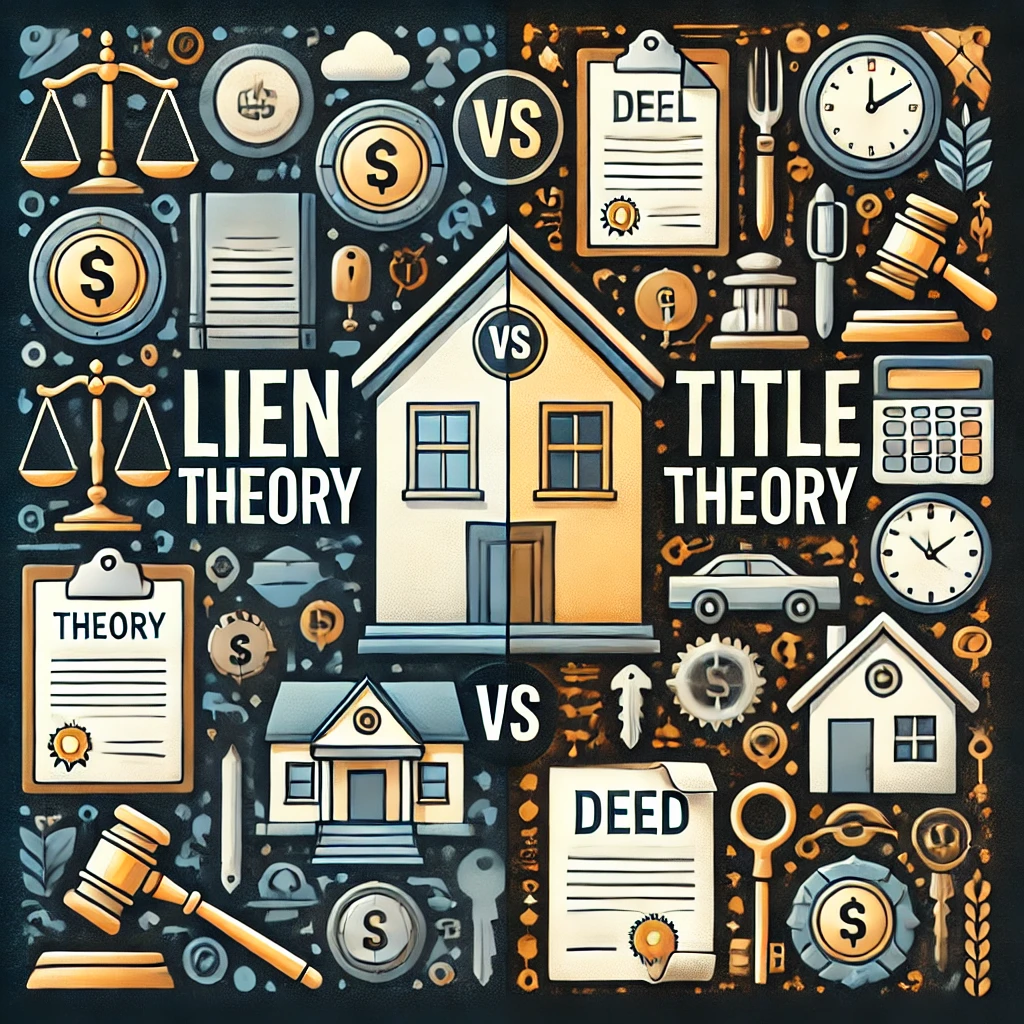Triple Net Lease Explained: Advantages and Disadvantages
A Triple Net Lease requires tenants to cover property taxes, insurance, and maintenance, offering lower base rent and more control over expenses, while landlords benefit from predictable income and reduced management duties.
Abhinil Kumar
Author

What is a Triple Net Lease?
A Triple Net Lease is a type of real estate lease agreement where the tenant agrees to pay all operating expenses associated with the property they are renting. This includes property taxes, building insurance, and maintenance costs, in addition to the base rent and utilities. This lease structure is commonly used in commercial properties and offers distinct benefits and challenges to both landlords and tenants.
The concept of a triple net lease is quite straightforward. The tenant essentially assumes all the responsibilities that come with property ownership, without actually owning the property. This means that they are responsible for maintaining the building, covering insurance costs, and paying property taxes, on top of their rental payments, effectively relieving the landlord of these financial obligations.
The advantages of triple net leases are numerous. Firstly, the lower rent associated with this type of lease can make it more attractive to potential tenants. By shifting the costs of building maintenance, insurance, and property taxes to the tenant, landlords can offer lower rental rates, making the property more appealing to businesses seeking cost-effective leasing arrangements.
Additionally, triple net leases provide tenants with the opportunity to have more control over the property. They have the ability to modify and customize the space to suit their specific needs, and can also benefit from potential tax deductions associated with their responsibilities for property taxes and insurance.

Triple Net Lease vs Regular Lease
Key Features of Triple Net Leases
-
Base Rent: In a Triple Net Lease, the base rent is generally lower than in standard lease agreements. This reduction is due to the tenant’s agreement to cover additional operating costs, traditionally managed by the landlord. This setup is particularly attractive for businesses that prefer lower monthly rent while taking on more responsibility for the property’s direct expenses.
-
Triple Nets - Additional Costs: The defining feature of a Triple Net Lease is the tenant’s obligation to handle the three main expenses, which are taxes, insurance, and maintenance—collectively known as “the triple nets.” Here’s how these costs break down:
-
Real Estate Taxes: Tenants are responsible for all real estate taxes on the leased property. This commitment requires careful financial planning to accommodate annual changes in property taxes, which can vary based on local tax rates and property assessments.
-
Building Insurance: Tenants must procure and manage building insurance, ensuring coverage that meets or exceeds the lease requirements. This insurance must cover potential damages and liabilities, protecting both the tenant’s business and the landlord’s investment.
-
Maintenance Expenses: Under a Triple Net Lease, tenants take full responsibility for the property’s upkeep. This comprehensive duty covers everything from routine maintenance such as landscaping and interior cleaning to major repairs involving HVAC systems, roofing, and structural integrity. The tenant’s proactive management of these tasks is crucial in controlling operational costs and maintaining the property’s value and functionality.
-
-
Operating Expenses: Aside from the triple nets, tenants must also manage everyday operating expenses, which include:
-
- Property Management: Tenants might take on several management responsibilities or opt for hiring third-party services to handle day-to-day operations.
- Utilities: All costs for utilities associated with the property, like water, electricity, gas, and waste disposal, fall under the tenant’s purview.
Advantages of Triple Net Leases
For Landlords
- Steady Income: One of the primary advantages of Triple Net Leases for landlords is the steady, predictable revenue stream. Since the tenant handles most variable expenses, the landlord receives a consistent rental payment each month. This stability is particularly appealing to investors seeking reliable rental income from their real estate investments.
- Lower Management Duties: With the tenant responsible for the day-to-day management responsibilities, including property management, maintenance costs, and operating expenses, landlords face significantly lower operational burdens. This reduction in managerial tasks makes Triple Net Leases attractive for landlords who prefer a more hands-off investment approach or those managing multiple properties.
- Long-Term Security: Typically, Triple Net Leases involve longer lease terms, which provide landlords with long-term occupancy and financial stability. This arrangement minimizes turnover rates and vacancy periods, ensuring sustained cash flow and reducing the costs associated with finding new tenants.
For Tenants
- Lower Monthly Costs: Tenants often benefit from lower base rent in a Triple Net Lease arrangement compared to standard lease agreements. This can be particularly advantageous for businesses looking to manage cash flow more effectively. The lower initial rent helps offset the additional costs that the tenant will incur for taxes, insurance, and maintenance.
- Control Over Expenses: By taking on the responsibility for the property’s taxes, insurance, and maintenance, tenants gain more control over these expenses. This control allows for better budget management and potential cost savings. Tenants can shop for competitive rates on insurance and choose maintenance services that best meet their budget and needs, which can lead to overall lower operating costs.
- Potential for Customization: Unlike traditional leases, where the landlord may dictate specific terms for property use, Triple Net Leases often allow tenants greater freedom to customize or modify the leased space to fit their specific business requirements. This flexibility is crucial for businesses that require specific modifications to their operational space, such as restaurants, retail stores, or speciality service providers.
Disadvantages of Triple Net Leases
For Landlords
- Limited Control Over Property: Landlords in a Triple Net Lease scenario relinquish much of the control over the property’s maintenance and management. While this can reduce the burden of day-to-day responsibilities, it also means that the quality of property upkeep depends largely on the tenant’s diligence and management skills. This factor can eventually affect the property’s long-term value and appeal.
- Dependency on Tenant’s Financial Stability: The success of a Triple Net Lease heavily relies on the tenant’s ability to maintain financial stability. If a tenant faces economic difficulties, this can impact their ability to manage and maintain the property effectively, leading to potential financial and operational issues.
- Market Risk: Triple Net Leases expose landlords to market risks related to fluctuations in real estate taxes and insurance costs. If these expenses increase unexpectedly, tenants may struggle to cover the costs, potentially leading to financial disputes or even vacancies, which can disrupt the income stream.
For Tenants
- High Financial Responsibility: Tenants bear the burden of significant additional expenses on top of the base rent in Triple Net Leases. These costs include property taxes, insurance, and maintenance. Such financial responsibilities can become burdensome, especially if unexpected repairs or tax increases arise, impacting the tenant’s cash flow and operational budget.
- Operational Risks: Managing a property involves various operational risks, including the potential for high maintenance or repair costs. For tenants, such expenses can be unpredictable and vary significantly, affecting their financial planning and business operations.
- Long-Term Commitment: Triple Net Leases typically involve long-term commitments, which can restrict a business’s flexibility to adapt to changing market conditions. This can be a significant disadvantage in dynamic industries where scalability and adaptability are crucial.
Financial Implications and Considerations
- Property Investments: When considering a Triple Net Lease, the investment value of the property itself is a primary concern for both landlords and tenants. This type of lease often attracts serious investors interested in long-term gains, as the property’s appreciation potential plays a critical role in the overall return on investment (ROI). Landlords need to consider the quality and location of the property, factors that significantly influence its value appreciation over time. Tenants, on the other hand, must evaluate how the property will support their business operations and growth, making sure it aligns with their strategic objectives.
- Insurance Costs: Insurance costs are another significant financial aspect under Triple Net Leases. Since the tenant is responsible for covering building insurance premiums, a thorough assessment of the necessary coverage is essential. This includes not only basic property insurance but also liability and other forms of coverage depending on the business type. Both parties must be proactive about understanding potential increases in insurance premiums, which could impact the overall costs during the lease term.
- Lease Agreement: The cornerstone of avoiding conflicts in Triple Net Leases is a well-drafted lease agreement. This document should detail all parties’ responsibilities, including payment of taxes, insurance, and maintenance costs, as well as terms regarding lease renewals, defaults, and terminations. Clarity in the lease agreement prevents misunderstandings and legal disputes, making it a critical document that requires careful negotiation and legal scrutiny.
- Real Estate Investments: For investors, Triple Net Leases offer a stable yet fixed income stream, which must be balanced against the lack of flexibility in adjusting rental income based on fluctuating market conditions. Real estate investors need to carefully evaluate the potential returns on investment, considering factors like tenant creditworthiness and market trends. The stability of income in a Triple Net Lease can be a significant draw, but it’s essential to assess whether this aligns with the investor’s financial goals and market conditions.
How spreading out costs among multiple tenants can reduce financial risk for landlords

Spreading out costs among multiple tenants can greatly reduce financial risk for landlords in several ways. By having multiple tenants, landlords can diversify their sources of rental income, which provides a safety net in case any individual tenant defaults on their lease or vacates the property.
When costs such as maintenance, insurance, and taxes are shared among multiple tenants, the potential negative impacts of a lease default or a tenant leaving are mitigated. For instance, if one tenant defaulted on their lease, the financial burden would be minimized as the remaining tenants would continue contributing towards covering the property expenses. In the case of a tenant leaving, the costs associated with finding a replacement tenant can also be distributed among the remaining tenants, reducing the financial strain on the landlord.
This diversification of financial responsibility not only helps reduce financial risk but also ensures a more stable and reliable income stream for the landlord. Even if one tenant were to face financial difficulties or leave the property, the income from the other tenants helps maintain a consistent cash flow. This stability provides landlords with a sense of security and allows them to better manage their expenses and investments.
Conclusion
Triple Net Leases offer unique advantages and challenges to landlords and tenants, making them a compelling option for those seeking long-term commercial lease arrangements with predictable costs and responsibilities. While they provide stability and predictability, they also require both parties to consider their financial health and investment strategies carefully. Understanding the detailed dynamics of Triple Net Leases helps stakeholders make informed decisions that align with their long-term financial and operational goals.
FAQs
1. What is a Triple Net Lease (NNN Lease)? A Triple Net Lease is a type of commercial lease where the tenant agrees to pay all property operating expenses, including property taxes, building insurance, and maintenance costs, in addition to the base rent and utilities.
2. What are the main advantages of a Triple Net Lease for landlords?
- Steady Income: Provides a predictable revenue stream as tenants cover most variable expenses.
- Lower Management Duties: Reduces operational burdens since tenants handle property management and maintenance.
- Long-Term Security: Typically involves longer lease terms, ensuring financial stability.
3. What are the main advantages of a Triple Net Lease for tenants?
- Lower Monthly Costs: Base rent is generally lower.
- Control Over Expenses: Tenants manage their own expenses, allowing for potential cost savings.
- Potential for Customization: Greater freedom to modify and customize the leased space.
4. What are the disadvantages of a Triple Net Lease for landlords?
- Limited Control Over Property: Landlords rely on tenants for property upkeep, which can affect long-term property value.
- Dependency on Tenant’s Financial Stability: Financial instability of tenants can impact property management and income stream.
- Market Risk: Exposure to fluctuations in real estate taxes and insurance costs.
5. What are the disadvantages of a Triple Net Lease for tenants?
- High Financial Responsibility: Significant additional expenses on top of base rent.
- Operational Risks: Unpredictable maintenance or repair costs.
- Long-Term Commitment: May restrict business flexibility in adapting to market changes.


